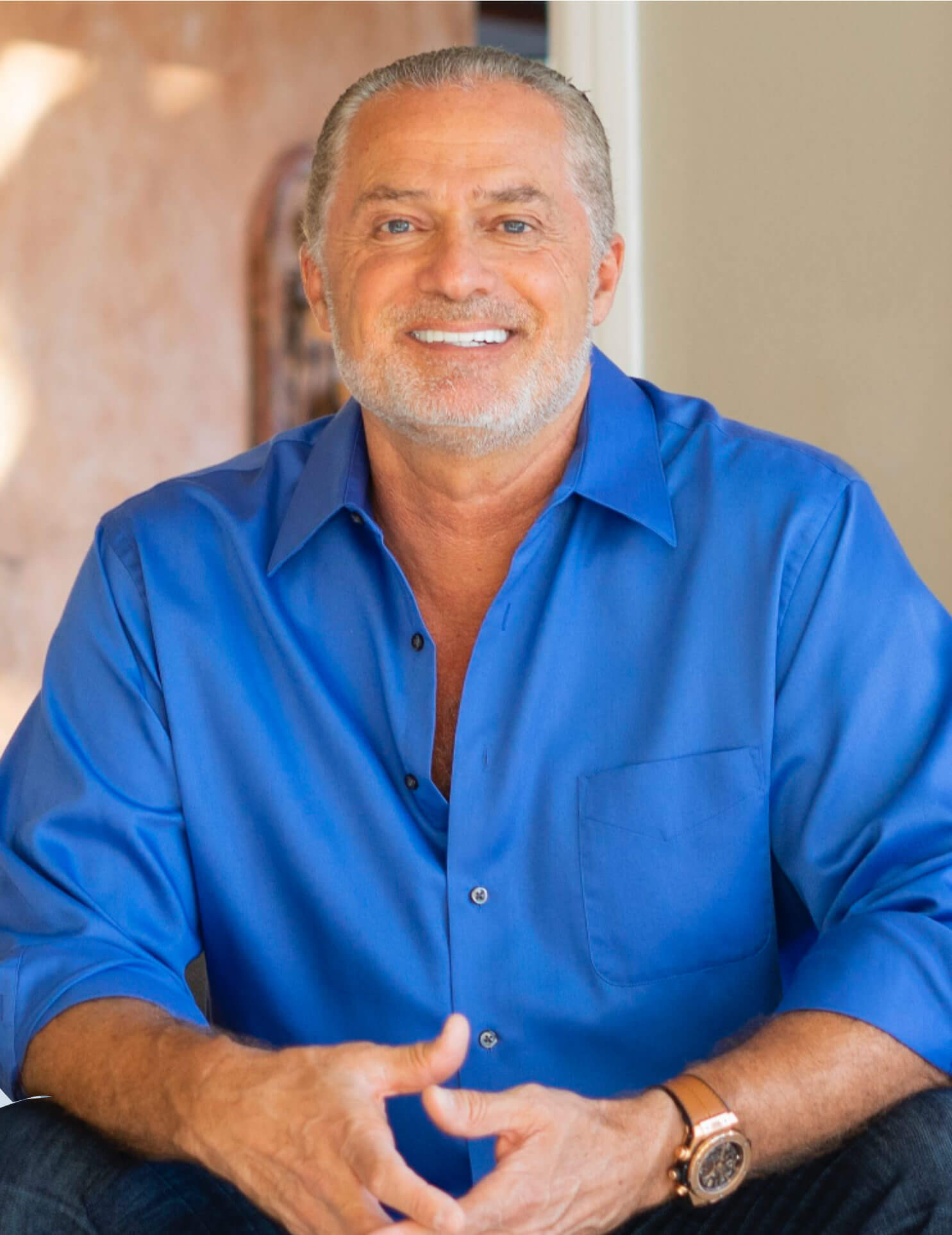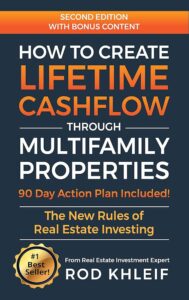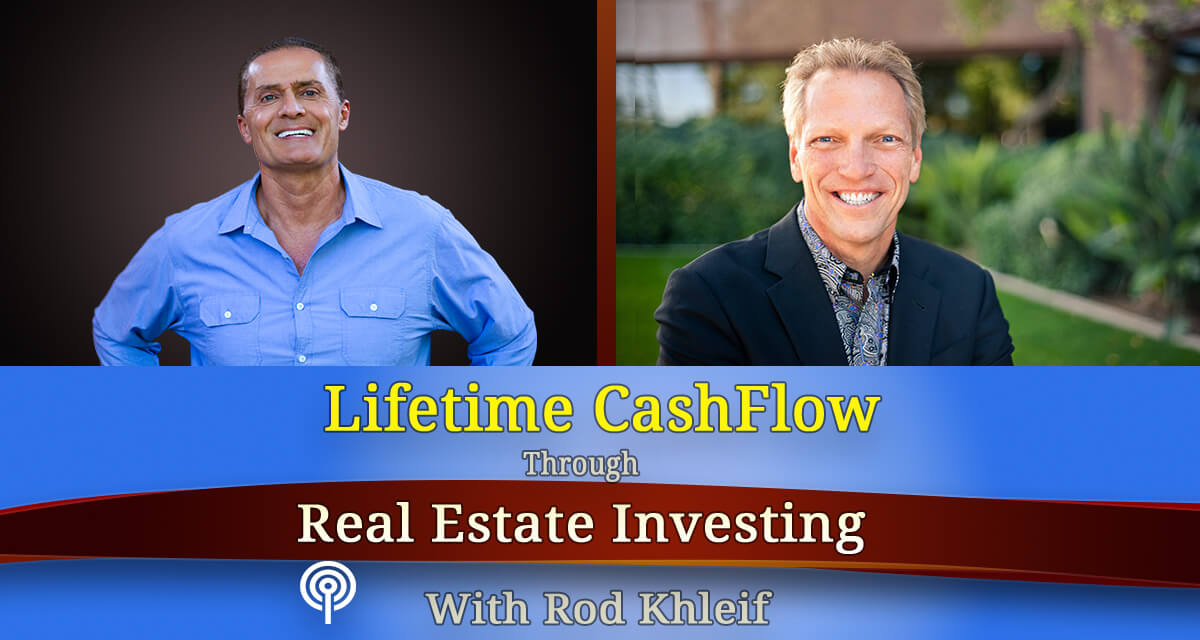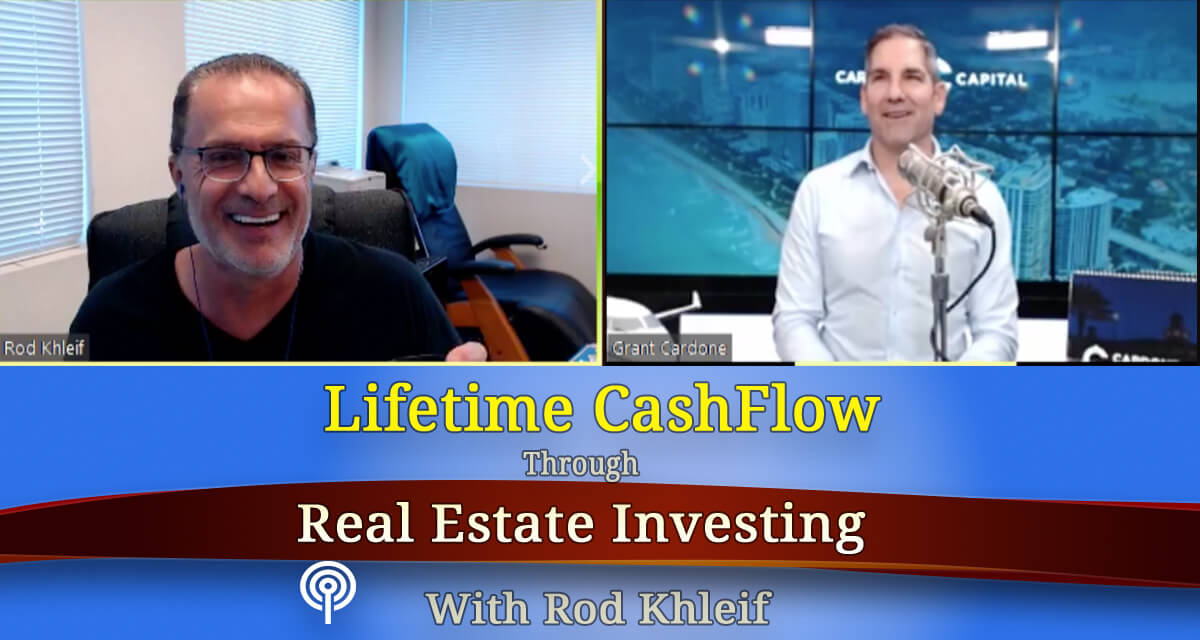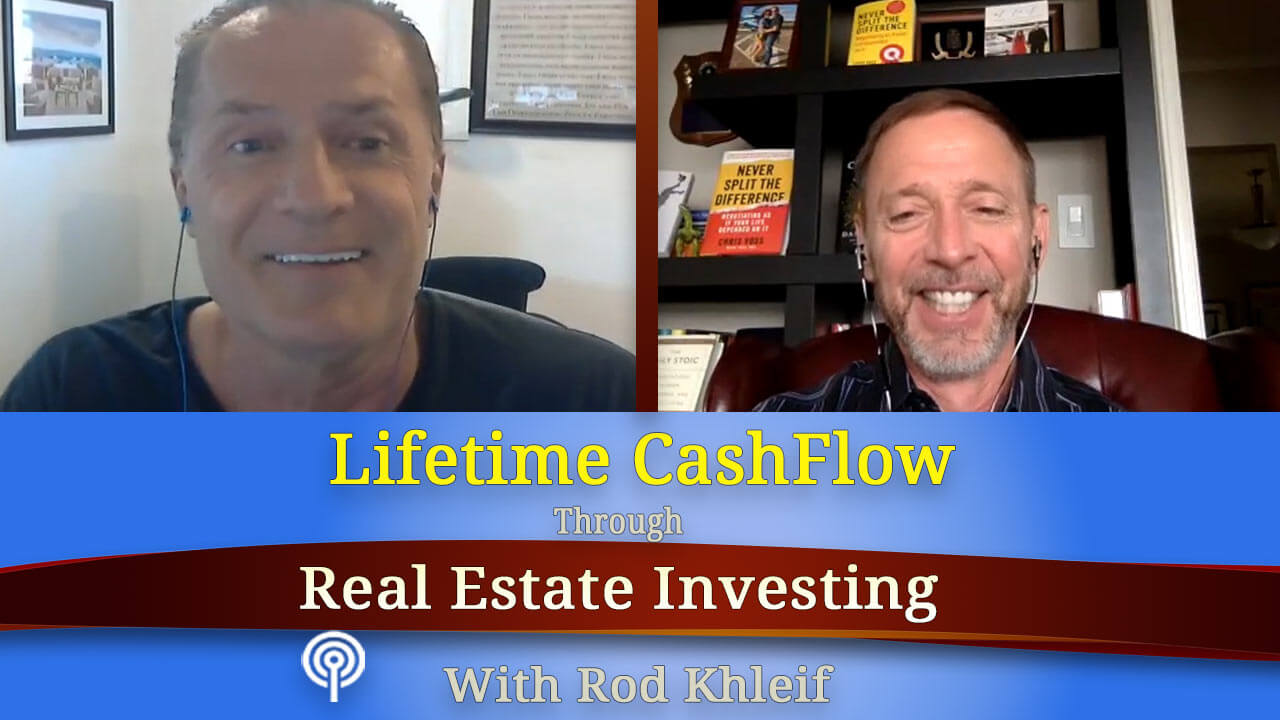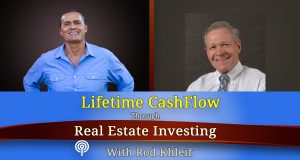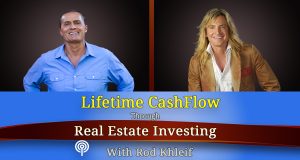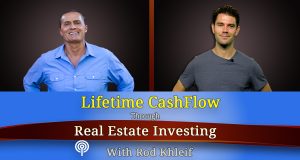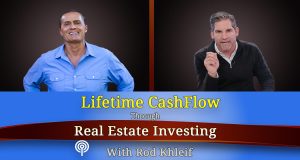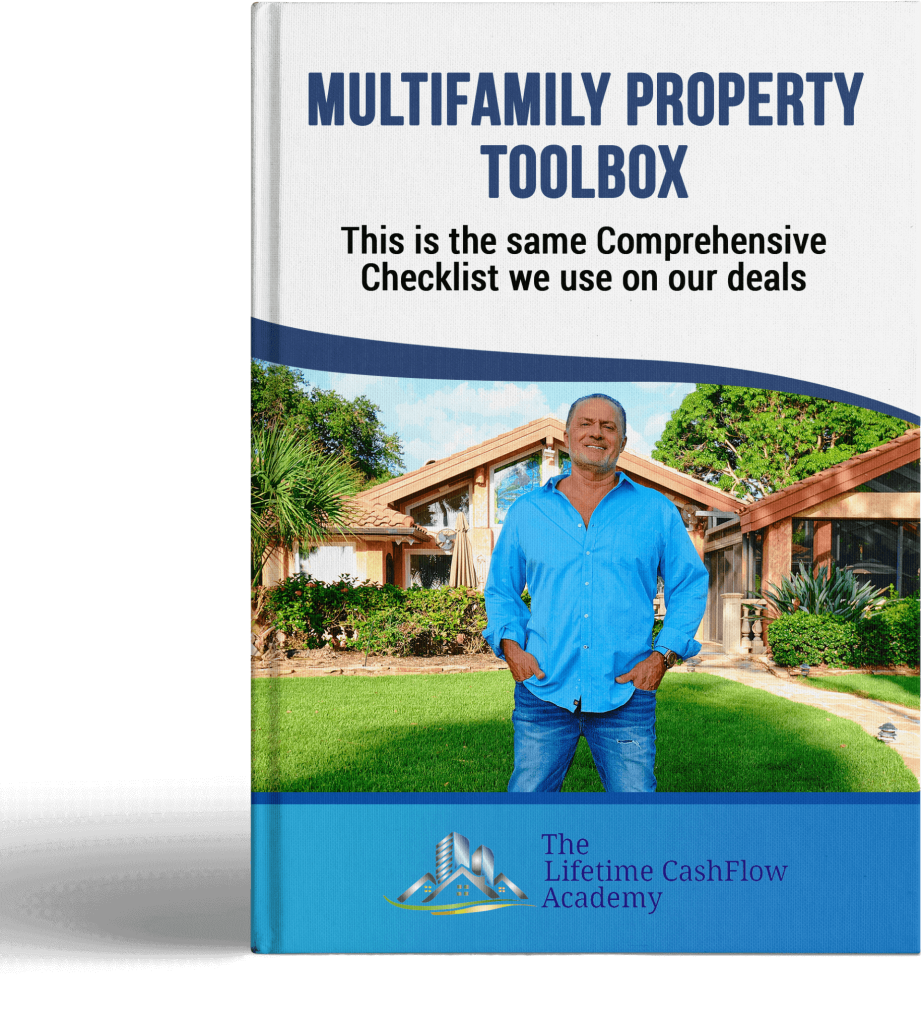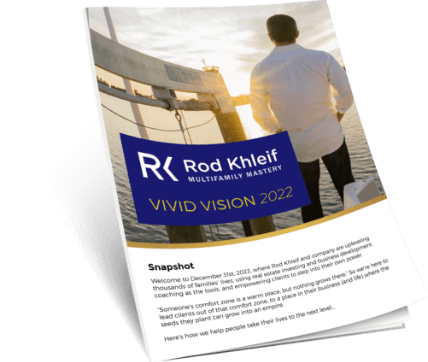Ep #111 – The 5 Elements of Raising Money for Your Real Estate Deals.
Victor Menasce is a successful multifamily real estate investor and author of Magnetic Capital, How to Raise All the Money You Need for ANY Worthy Venture.
Here’s some of what you will learn:
- The 5 Elements of Raising Money for Your Real Estate Deals
- #1 Relationships #2 Trust #3 Results / Track Record #4 Have a Compelling Opportunity #5 Alignment
- How can I raise money if I don’t have a track record?
- How can I get a track record if I can’t raise any money?
- How to Qualify an Investor Don’t try and create a forced fit?
- What is the difference between an equity investor and a debt investor?
- What is a capital stack? What is mezzanine capital?
- What people do to repel investors!
- What dating and finding investors have in common?
- How to raise funds without asking for money?
- How to invest like a billionaire (when you’re not)?
- Most great deals are not found, they’re created.
- Real estate is a team sport
- Book recommendation: Magnetic Capital, How to Raise All the Money You Need for ANY Worthy Venture by Victor Menasce
- Connect with me on Facebook at: Rod Khleif Text ROD to 41411 or visit RodKhleif.com for a FREE copy of my book, “How to Create Lifetime Cash Flow Through Multifamily Properties.”
Our Guest You can learn more about at: Victor Menasce and purchase: Magnetic Capital, How to Raise All the Money You Need for ANY Worthy Venture by Victor Menascehttp://www.magneticcapitalbook.com/
Full Transcript Below:
Ep #111 – The 5 Elements of Raising Money for Your Real Estate Deals. Victor Menasce is a…
Welcome. This is the Lifetime Cash Flow Through Real Estate Investing Podcast. This is where you’ll learn strategies to help you achieve lifetime financial freedom through real estate investment. Your host, Rod Khleif, has owned over 2,000 homes and apartments. And he brings experts in all aspects of real estate investment and management on to the show. Now, here’s your host, Rod Khleif.
Rod Khleif: Guys, I have some exciting news. Since launching our podcast, and it hasn’t even been a year yet, we’ve had over a million downloads. I got to tell you, I’m so very grateful to you guys for your amazing support. During that time, I’ve spoken with, or met, or corresponded by email with literally almost a thousand of you. I can honestly say it’s been an incredible joy for me.
When I release my book How To Create Lifetime Cash Flow Through Multi-Family Properties, more than 6,000 of you signed up to receive a copy. Well today, I’m excited to announce that within a few weeks we’ll be launching, what I can humbly say is the best multi-family training and coaching program available anywhere.
We’ve carefully designed our program to include comprehensive online course, coaching, accountability, motivation, an online members area, tickets to a live event. We packed it with a ton of other valuable tools and resources designed to help you quickly crush it in this business. To help you get to lifetime cash flow as quickly as possible.
If you’d like to receive some information on this when it becomes available, text the word CRUSH, C-R-U-S-H to 41411. Alright, let’s get to it.
Rod Khleif: Welcome to Lifetime Cash Flow Through Real Estate Investing. I’m Rod Khleif and I am thrilled you’re here. I know you’re gonna get a ton of value from the gentleman we’re interviewing today. His name is Victor Menasce.
He has a new book entitled Magnetic Capital: How to Raise All the Money You Need for Any Worthy Venture. He’s actually raised over $300 million himself for numerous things like corporate buyouts ventures, real estate projects all across America. He’s a real estate investment expert developer and we’re lucky to have him on the show. Victor thanks for joining us.
Victor Menasce: Great to be here.
Rod Khleif: I always like to ask, where you got your start? And as you know, my listeners are multi-family real estate investors or aspiring multi-family real estate investors, so maybe you can gear your response to your involvement in the real estate arena. ‘Cause I know you also do a lot of work in startups and things of that nature.
Victor Menasce: Well, I got my start in fact in technology.
Rod Khleif: Okay.
Victor Menasce: I started out as an electrical engineer designing chips for telecom and various applications like that. That’s a non-traditional path to being a real estate investor, that’s for sure.
Rod Khleif: Yep.
Victor Menasce: What I did from there is got involved in the business development side and raising money for startup companies. Then, it was around 2008, I decided to take a left hand turn in my career, and move into the world of real estate investment.
Rod Khleif: Interesting time for you to do that. [chuckles]
Victor Menasce: It was an interesting time.
Rod Khleif: Great time, actually for you to do that. I was reeling from pain at that time but great time to get into the business.
Victor Menasce: It was. I was still doing work on the technology side. I had a VP of engineering role, designing chipsets for data cards. I was traveling to Japan every two weeks.
Rod Khleif: Wow.
Victor Menasce: So it was absolute burnout. I simply made a decision at that point in time to move into the world of real estate investment, full-time, because I saw it as an opportunity.
I started out using my own capital, and like anything, when you’re using your own money, you run out pretty fast, especially in real estate. And then I remembered, I said, “Oh yeah, Victor, you know how to raise money.” And had to resurrect that skill set from the previous life. But now, adapt it to the world of real estate investment.
Rod Khleif: Okay. Okay. So you got into investing, and then it looks like you honed in on the raising money piece of investing, which of course is probably one of the most important pieces other than finding great deals.
I’d love to dig in, just hone in on your knowledge, and valuable advice regarding raising money, actually going out there and finding money. You go into it a great detail in your book and I am a short way through that, I’m not finished by any means, but what I’ve read so far has been fantastic. So I will recommend it.
Victor Menasce: Thank you.
Rod Khleif: I know that you like to talk about five elements of raising money. Do you mind expanding on that for us?
Victor Menasce: Of course. What I’ve discovered as I was raising money for a variety of different projects, there was a pattern. Almost a set of unwritten rules, that if you follow them, raising money is remarkably easy. And when raising money got difficult, it’s because one of those elements was missing.
Almost think of it like a pair of shoes. It doesn’t matter, you can got to the store, you can find the most beautiful pair of shoes, and, “Oh my gosh, it’s your lucky day, they’re on sale.” But if they don’t fit, you’re not a buyer. It doesn’t matter how lovely they are or how deeply discounted they are.
If you think about investing, that way, it takes a lot of the pressure off. It makes it so much easier to engage with investors. Because all you’re really looking for is that perfect fit. If it’s not a perfect fit, don’t do it. When you look at the fit, it breaks down into these five elements.
Rod Khleif: Okay.
Victor Menasce: Number one is relationship. Most people are not gonna part with large amounts of their hard earned cash with someone they don’t have a relationship with. And so it really starts there. When I say relationship, I don’t mean networking, I don’t mean those other utilitarian terms. It’s really got to be genuine relationship.
Rod Khleif: I see. Okay.
Victor Menasce: Number two is trust. It’s foundational. Trust is not just, “Is this an honest person you’re dealing with?” It’s a whole bunch of different things. Like do you have alignment of intention? If you don’t have that alignment of intention, it’s gonna be very difficult to trust.
Then the third one, the third element of trust it so important that it actually is the third element. Which is a track record. Show me your results. But before I go into the third one, let’s dig into trust a little bit more.
It’s a whole series of questions. Like, can you put together a good plan? Can you execute the plan? Can you hire the right team? Can you communicate transparently? Will you communicate when there’s a problem? All of these different elements and if any one of them is missing, it actually doesn’t work.
Rod Khleif: That’s good stuff. Okay, so that’s trust. Now, let’s talk about track record.
Victor Menasce: People want to invest in folks that have a demonstrated track record. Show me that you know how to be successful. Show me that you know how to make money. Show me that you know how to lead a team.
People invest in businesses they don’t typically invest in the self-employed. They wanna see the track record not just for yourself but for the folks that you surrounded yourself with. You gotta be part of that larger team, because that’s why it has sustainability.
If I’m away for a week on the beach, my investors need to know that the projects are continued, that things are not coming to a standstill because I’m out of the office. There has to be that sustainability. And so much of the real estate world, especially real estate education, is focused on the do-it-yourself model.
I think we’re actually doing people a disservice because at the end of the day business is a team sport. It doesn’t matter what the business is. It’s always a team sport.
Rod Khleif: Couldn’t agree more. Especially commercial real estate, in fact, it’s such a huge advantage versus single-family real estate. The fact that you can put a team together, and when you’re out there raising money, and borrowing money, a team approach is a fantastic way to go about it, because you can supplement your deficiencies in different areas. Of financial areas and credit, and things of that nature, by other people on your team.
Experience of course you can supplement experience. I’m a huge proponent; I think I did a whole segment on teams. Super, that’s great.
Victor Menasce: That’s exactly right… One of the questions I often get, especially from rookie investors is, “How can I raise any money if I don’t have a track record? How can I get a track record if I can’t raise any money? I’m stuck. It’s a catch-22.”
Rod Khleif: It’s such an easy answer.
Victor Menasce: Absolutely.
Rod Khleif: It’s go out there and find the track record.
Victor Menasce: Exactly.
Rod Khleif: I tell people, if you can’t qualify, find a sponsor. Find somebody that’s got similar property that hopefully near the area where you’re interested in buying, even if you have to give up a big chunk. Do that first deal and then you’ll have a track record.
Victor Menasce: Exactly.
Rod Khleif: That’s what’s so great about this particular business, multi-family real estate. So that was the third, what’s the fourth, Victor?
Victor Menasce: Number four is you’ve got to have a compelling opportunity. Now, that’s always a little bit in the eye of the beholder. Some people say, okay for them, 10% rate of return is compelling. For me it’s not.
Some people specialize in a particular asset class. Maybe they only do medical office buildings, or maybe only industrial, or whatever. It’s got to fit within that definition of beauty that is in the eye of the beholder.
Rod Khleif: I love it. Love it. I’m gonna quote you on that one. That’s awesome. Now, that’s great. And the fifth one? Then I wanna ask you how you go about qualifying a prospective investor, so I don’t wanna lose sight of that question.
Victor Menasce: Sure.
Rod Khleif: What’s your fifth one?
Victor Menasce: And the fifth one is alignment. Alignment is really all of the other elements of assessing that perfect fit. Alignment breaks down into about another seven or eight very specific criteria. It’s things like, what is the size of the investment? What is the length of the investment? How long is the money gonna be tied up for? What’s the rate of return? What is the security? What is the risk? What’s the control structure? What is the tax consequence of the investment?
And on and on, there’s about seven or eight of them. And if you don’t have a perfect fit on those elements…
[00:10:00]
Victor Menasce: It’s gonna be very difficult. Often times, it’s seductive because it looks like you’ve got a majority fit, and it’s not enough. You actually have to hit on all of those.
Rod Khleif: No kidding. Perfect fit. Well that’s very sound advice… Let’s talk about how you go about making sure you have that perfect fit. Do you have any information in your book about how to begin that conversation or how to make sure that your aligned?
I’m big on checklists. Is there anything like that? Or maybe you can speak to it a little bit?
Victor Menasce: It really starts with a conversation with the investor, and asking them what they are looking for. The more sophisticated the investor, the more rigid they’re typically gonna be on what that criteria are. The less sophisticated the investor, don’t have those goals as clearly defined.
When you know what that investor is looking for… For example, I have someone who is a long-term investor. He knows that if his money is at work he’s making returns. If the money sitting on the sidelines it’s earning essentially zero.
So he wants to put his money in, he’d like to keep it in for five years and he wants it working… It doesn’t have to be too highest rate of return but he always wants it working. That’s his criteria.
I’ve another investor that wants to turn their money every six months
Rod Khleif: Right.
Victor Menasce: I’m not gonna give my five-year guy a flip, and I’m not gonna give my six-month guy a long-term hold. It doesn’t make any sense.
Rod Khleif: That’s very important. That the super… Any other really big criteria, that you might suggest, getting answered in that initial conversation, besides the length of the hold?
Victor Menasce: Oftentimes, the biggest question that comes up… Well, there’s different class of investors, but one question that often comes up is the question of risk. Risk, together with security, defines safety. Let me break that down into what that really means.
Risk is, what is the likelihood of something going bad? The security is, how secure are you in the investments? Let’s say I’m a lender. I’m a 10% loan to value. I really don’t care what the risk is because I’m extremely secure.
Rod Khleif: Sure.
Victor Menasce: If I have to foreclose, I’m gonna get my money back and then some. If I’m at 90% loan to value then I’m gonna be assessing the risk much more closely because the combination of risk and security is much, is a lower factor of safety. You gotta look at the two of those together.
Rod Khleif: Okay.
Victor Menasce: The second one that often comes up, in particular, when you’re dealing with larger money, is the whole question of how much money are you putting to work. When you’re dealing with very deep-pocketed investors, their scarce commodity is not money. Their scarce commodity is time.
They have a certain number of deals they can do in a year, and they may have an investment minimum. It might be $5 million; it might be $8 million or something like that. Where if it’s anything less than that, it’s not worth their time, and it’s not worth the paperwork.
Often times, you’re dealing with a situation where you might be presenting something that’s simply too small, and the conversation ends up being something of the form, “Well, how about we do a small ‘get acquainted’ project?” Or something like that, just to see if there’s some way to create a fit but if there isn’t that fit, move on. Don’t waste people’s time. Don’t try and create a force fit.
Rod Khleif: Good advice. Good advice. Any last comment on that, on the fit or those are the big ones?
Victor Menasce: Those are the big ones.
Rod Khleif: Okay.
Victor Menasce: I guess the other thing is, if once you know what the investor is looking for, you actually have a fair degree of latitude in terms of how you package your investment offering. Now, if you’re doing the syndication, and you’re bringing in 10 or 15 investors, you’re not gonna do 10 or 15 different private placement memorandum, it doesn’t make any sense.
Rod Khleif: Right.
Victor Menasce: You’re gonna put everyone under a single model. But you might have two. You might, for example have a debt offering and you might have an equity offering. And so for the debt offering, you figure out what the sweet spot is for the investors that you’re working with. You do the same thing on the equity side. And you try to get the best match for that.
There will be folks for whom it doesn’t fit, and if it doesn’t fit…
Rod Khleif: Just for my listeners, just so they’d understand what we’re talking about here. An equity offering would be raising money for the down payment, the renovation costs, all the out-of-pocket expenses, and typically getting financing. But not always, sometimes you can just totally raise equity and purchase a property cash using equity.
Now, debt offering is… and so in an equity offering that your investors have a piece of equity.
Victor Menasce: Correct.
Rod Khleif: For example, in my funds, we offer a 50% equity position, and our goal is to refinance in five years, get a return of capital to our investors and they staying in with a 50% equity position even once they had their capital return, so that’s an equity investor.
Now, debt investor would be just like it sounds. They’re acting like a bank. They’re loaning money to the investment at a rate of return. They don’t have an equity position and they’re just looking for a rate of return secured by real estate.
Let me ask you a question, Victor, Do you find it’s… I would guess that you find it’s easier to raise equity than debt, is that an accurate statement?
Victor Menasce: Not necessarily.
Rod Khleif: No?
Victor Menasce: No. Not necessarily.
Rod Khleif: Okay.
Victor Menasce: Really, it’s up to the individual.
Rod Khleif: Okay.
Victor Menasce: Some people are interested simply in a rate of return and when… So let’s go through the whole capital stack here…
Rod Khleif: Okay… And just so my listeners understand that statement. A capital stack is all the money needed to consummate a transaction, from the equity to the debt. What else is in there Victor?
Victor Menasce: We’ll start at the top with what’s called a senior debt, and this is typically the bank debt. It’s called senior debt because it’s in the first lien position. If you go back through history, what that meant was they were typically first to get to the County Recorder Office to get their lien, the mortgage recorded on title.
That’s the senior debt. They’re in first position. They have the most seniority, basically, the rights. They’re first in line to getting paid.
Rod Khleif: They’re the most protected.
Victor Menasce: They’re the most protected
Rod Khleif: Right.
Victor Menasce: The second lien position if there might be secondary debt sometimes. a vendor take back or seller financing will being sent in second lien position. Sometimes, if you have debt investors, they might be in second lien position.
In banker terminology, they sometimes call that mezzanine money.
Rod Khleif: Right.
Victor Menasce: Or they might abbreviate it and may call it MEZ. So if you wanna get familiar with the lingo, and someone says, “I need 10% MEZ”, that means they’re looking to raise 10% in that second lien position.
And then finally is the equity. That’s the banks are typically looking for the principals of the project, to have skin in the game, to put up equity, along with the other investors. That percentage of equity is something the lenders typically look hard at, as a part of the safety for the project.
Rod Khleif: Okay. So guys, what he’s talking about here on that capital stack as well is, I know you’ve heard me, or maybe you’ve heard my interviews with a couple of the people interviewed. They actually were able to get a seller to carry a second mortgage, and we’re able to get…
I remember one kid I interviewed in Michigan, I forgot his name, but he purchased a million dollar property for $5,000 down because he got the seller to carry a second; he closed it right near the first of the month and the bank agreed to it. He got in a very low down situation. He had a relationship with the bank, if I recall. So that’s the capital stack.
Victor Menasce: Correct.
Rod Khleif: Okay. So next question, you’ve been known to talk about what people do to actually repel money. Can you expand on that a little bit?
Victor Menasce: This comes into the realm of almost human relationships. If you think about the traditional relationship, maybe a couple get together, they go out on a first date. Maybe they get to spend time together. Long way down the road, they maybe get married; start a family.
That’s a natural process that takes a long period of time. If you try and accelerate or skip steps in that process, you go from a very natural progression to creepy in a heartbeat. So my advice is, don’t skip steps, because if you skip steps you’re going to creepy. And creepy…
Rod Khleif: So what are the steps?
Victor Menasce: Don’t force it. Simply, don’t force the progression of the relationship. For example, if I’m meeting somebody for the first time I’m not even gonna talk about business until maybe the sixth or seventh meeting. If they bring it up sooner, we can accelerate it but I’m not gonna push it.
This is not hunting. It’s more like farming. You really need to nurture it.
Rod Khleif: Oh, I love that. Love that. That’s a great analogy. You’re absolutely right. We all hate those people that the first thing out of their mouth is, “Hey, I’m doing real estate deals. Do you wanna invest?” You’ve got to develop a relationship first. You gotta develop trust and rapport.
I’m not sure I agree that you have to wait till the seventh meeting. But hey, if once you’ve established a relationship, they know what you’re doing, but it’s very subjective. And you’re gonna know if you trust your intuition and you’re a decent communicator, you’re gonna know when you can bridge that or discuss something of that nature.
You’re right, absolutely, don’t short-circuit that process.
[00:20:01]
Rod Khleif: Okay. Well that’s great.
Victor Menasce: And look sometimes, the investor themselves is gonna accelerate a conversation. I had lunch one time with the gentleman who had just moved here from Africa. He had a lot of money. He came in on an investor visa. He was flush with cash and looking to put it up to work.
Took him out for lunch on my sailboat. After lunch, after we barbecued some chicken, he said, “Okay, down to business.” Yeah. So I said, “Okay.” And we got down to talking about projects. But he set the timetable, I didn’t.
Rod Khleif: Okay. That’s great. That’s a great tip. Okay. The next thing you’re known for talking about is, to raise funds but not ask for money. Could you expand on that comment?
Victor Menasce: Oh, yes… When you ask for money it almost seems like you’re desperate, and desperation is never attractive. I mean, the women in the audience will relate to that instantly. So don’t appear desperate, number one.
I really don’t ask for money. What I do is I offer people with whom I have a relationship, an opportunity to collaborate on a project. That’s a very different posture, completely different.
Rod Khleif: That’s a whole mindset difference.
Victor Menasce: Exactly.
Rod Khleif: Okay. That’s great. So you offer people the opportunity to collaborate on a project, if they’re interested.
Victor Menasce: Yeah.
Rod Khleif: No sell, no you know… If you’re interested, great, let me know. If not, great, let’s have drinks.
Victor Menasce: That’s exactly right. Because at the end of the day, it would in fact be disloyal to someone with whom I have a meaningful relationship not to offer him the opportunity.
Rod Khleif: [chuckles] I love that. Love that. You’re doing a disservice because you’ve got this incredible opportunity and if you don’t tell them about it then how would they ever know or be able to capitalize on the opportunity.
Victor Menasce: Right.
Rod Khleif: I love that. That’s a great attitude to take about this guys, is you have an opportunity and if they don’t wanna take advantage of it, absolutely no problem. But if you don’t tell them about it you’re doing them a disservice. Love it. Absolutely, love it.
How do you invest like a billionaire if you’re not? I know that’s something else you talk about.
Victor Menasce: [chuckles] Here’s the approach that we’re taking for a lot of our development. There’s a large group of investors out there looking for deals. My attitude is that most great deals are not found, they’re created. There’s a very big difference between the two.
Rod Khleif: Okay. I want you to expand on that for sure.
Victor Menasce: If you look at any multi-unit project that’s out there, that’s 250 units and above, anything that’s appearing on the market today, if it appears on LoopNet, on the commercial MLS, there’s gonna be multiple offers. It’s almost a fact of life today.
I placed an offer last year on a 496-unit complex in Tyler, Texas and there were 20 offers on the property. I never want to be the winner with 19 other bidders.
Rod Khleif: No.
Victor Menasce: Unless, I know something that the other 19 don’t.
Rod Khleif: Unless you’ve got a track record and can prove you can deliver. I’ve had people on the show that have been in that environment, Grant Cardone being one of them.
Victor Menasce: Sure.
Rod Khleif: And just convinced the seller and the broker to accept his offer, which was less than the other offers because they knew he could close. So that would be the only caveat to that. But I agree with you. It’s a frenzy right now, and I really believe the sweet spot is in the smaller stuff but continue.
Victor Menasce: That’s exactly right. What we focus on is finding opportunities where we can buy right. You’ve heard it many, many times the money is made in the buy not necessarily in the sale.
Rod Khleif: Right.
Victor Menasce: So you’ve got to buy right. What we do, if you think about most cities they have this dividing line it’s usually typically right outside the downtown core, there’s gonna be a hot neighborhood that’s been really gentrified. There’s lots of cafes and art galleries, very walk-able communities lots of neighborhood restaurants.
Then you go two blocks too far and you’re into the hood…
Rod Khleif: I know it well. I talk about it regularly. There’s some incredible opportunities there. That’s what you’re talking about with creating value.
Victor Menasce: Absolutely. So what we do is we go just on the wrong side of that line. Now, that line has to be movable. Meaning, it can’t be a municipal boundary. It can’t be a freeway or something like that. That line has to be arbitrary.
If you start to develop on the wrong side of that line, you can literally buy on the line and move the line.
Rod Khleif: Right. Love it. Love it.
Victor Menasce: Now, you can’t just do one or two. That’s not enough for the marketplace to take notice, and say, “Oh yes, the line has moved.” You’ve got to put a little scale behind it. Or maybe invite other developers, other partners in so that there’s a lot of development going on around you.
If you do that then you can literally convince the marketplace. We’re developing right now, for example in Philadelphia. Where we’re in exactly that situation. To the south of us, we have the Fairmount district, which is a fairly expensive neighborhood.
A townhouse in that neighborhood will typically sell for half a million. You go one block north, that exact townhouse, going for 280.
Rod Khleif: Wow.
Victor Menasce: So in one block, if I can build new product that is comparable to what’s in the Fairmount district, I can get appraisal values that are very close, maybe not 100% of the Fairmount appraisals but I’ll get pretty darn close. Because there’s nothing to the north of me that is comparable, so the only comp that makes any sense is the one from a block away.
Rod Khleif: Wow. Wow.
Victor Menasce: So when you do that, you create tremendous value. You talked about a model where you’re taking money; you are returning capital to your investors, and then keeping them in the long term for the deal. That’s exactly the same thing we do.
Rod Khleif: Good.
Victor Menasce: What we do is we focus on capping out investment at 70% of what we believe to be the ultimate appraised value. So when we have that 30% lift, that 30% value add on top of our cost of construction, it’s very easy once you have it leased up and stabilized to go back, refinance and pull your chips off the table, pull out all the cash and you’re still sitting on maybe 25-30% equity, which is a reasonable ratio, but you have no cash tied up in the deal. Now, you can take that capital, redeploy, do it again.
Rod Khleif: That’s a great business model. That’s a great business model. And that’s a sophisticated business model, and you’ve got to have a good team put together. You’ve got to have a great general contractor. You’re actually building from the ground up or converting…?
Victor Menasce: We’re building up, yes.
Rod Khleif: Okay. So that’s a pretty sophisticated business model. Might be a little too much for some of the people that listen to my show, but it doesn’t mean to say, you can’t ultimately do it. And if you put the team together, a team that has done it, you could absolutely do it. How many units are you doing in that particular project you just referenced?
Victor Menasce: Right now, we have four 10-unit buildings under construction right now, as we speak.
Rod Khleif: Fantastic… Same general area?
Victor Menasce: Yeah. All within like a three-block radius.
Rod Khleif: So you’re moving the line yourself.
Victor Menasce: Correct.
Rod Khleif: Wow. Good for you. Wow that’s very impressive. Well, listen, Victor, I’m very grateful that you are on the show, and you’ve definitely added value. Guys check out his book, Magnetic Capital: How to Raise All The Money You Need For Any Worthy Venture. Is that on Amazon?
Victor Menasce: It’s not on Amazon yet. We’re actually doing a formal launch in May.
Rod Khleif: Okay.
Victor Menasce: They can order it from magneticcapitalbook.com
Rod Khleif: magneticcapitalbook.com. Awesome. Well, I definitely think that is gonna be a ton of value in that book. Victor, I’m very grateful to have you on the show.
Victor Menasce: It’s been my pleasure.
Rod Khleif: Alright, take care. Thank you.
Victor Menasce: Thank you. Take care.
[music]
Thank you for listening to the Lifetime Cash Flow Through Real Estate Investing Podcast. If you’ve enjoyed the show, please subscribe, and then take a moment to visit iTunes and leave a five star rating and review. For more resources to connect with us further, please visit our website at lifetimecashflowpodcast.com. Tune in next week for our next show.
[music]


